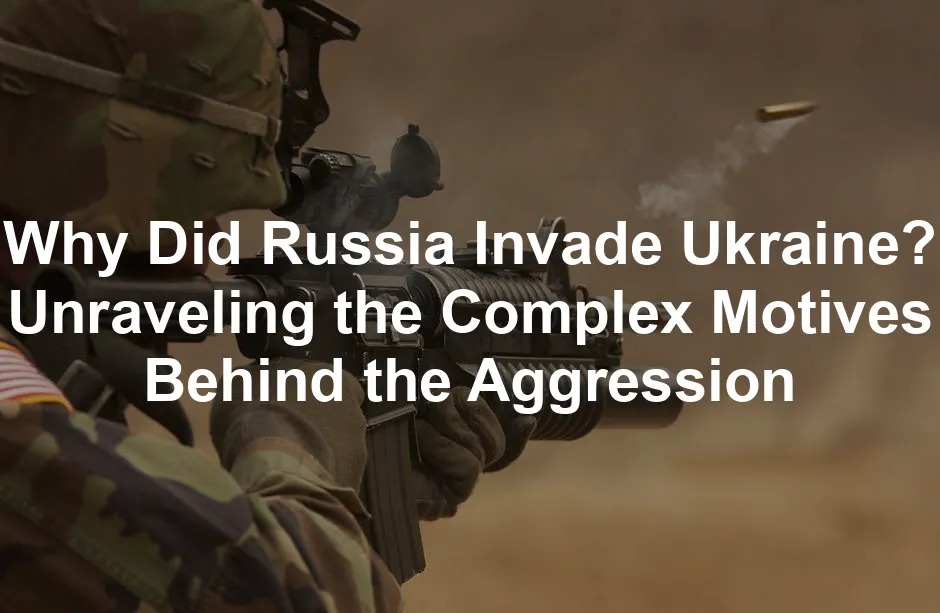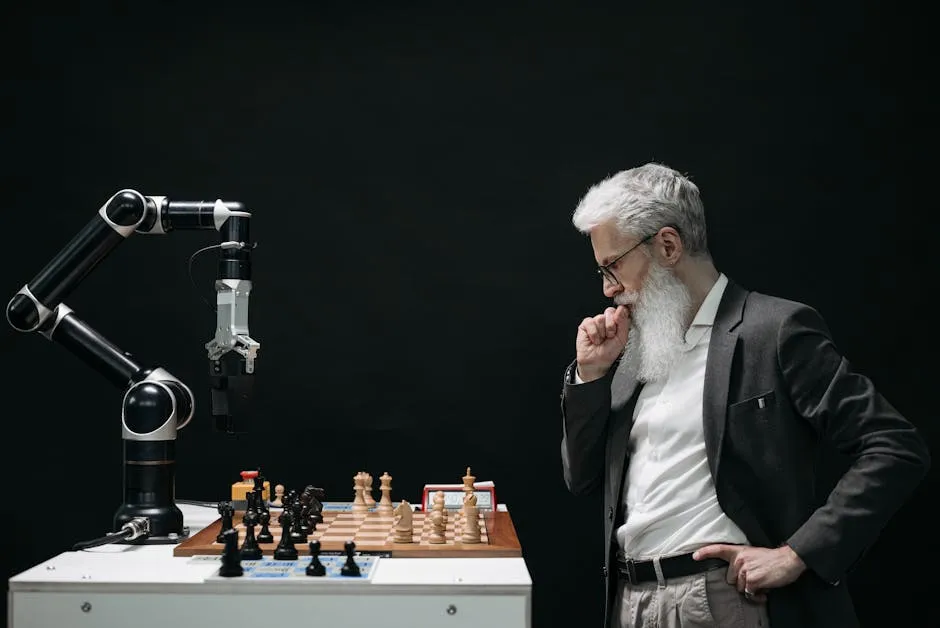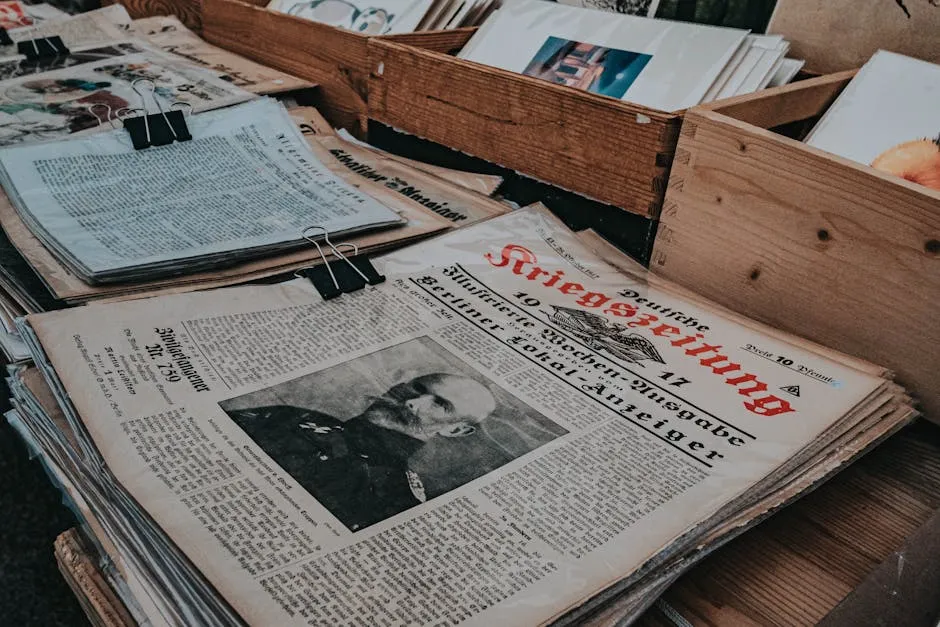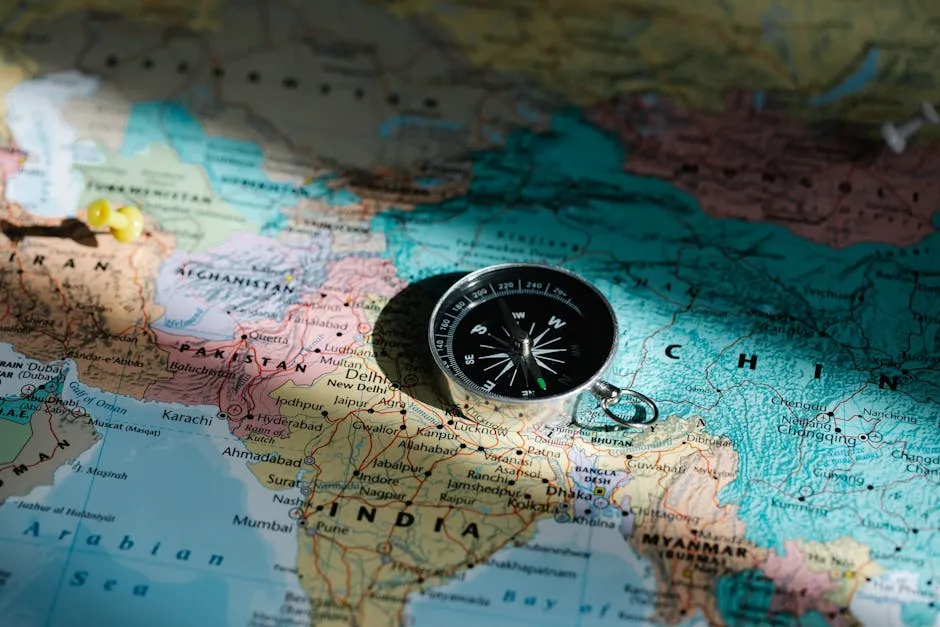
Why Did Russia Invade Ukraine? Unraveling the Complex Motives Behind the Aggression
Introduction
On February 24, 2022, Russia launched a full-scale invasion of Ukraine. This marked the largest military conflict in Europe since World War II. The world was left stunned. Why did Russia decide to invade its peaceful neighbor? Was it just about seizing territory, or were deeper historical and political factors involved?
To answer these questions, we must first understand the complex motivations that drove Russia’s actions. The narrative pushed by Russian leadership painted Ukraine as a hostile state. This idea, however, was quickly debunked. In reality, Ukraine had been a peaceful neighbor until Russia’s aggression in 2014. If you’re curious about the deeper historical context, you might want to check out “The Gates of Europe: A History of Ukraine” by Serhii Plokhy.
Putin’s claims of a Nazi threat in Ukraine are rooted in propaganda. This tactic, known as “maskirovka,” is part of Russia’s military strategy. It’s no surprise that Putin used this strategy to justify his actions. After all, he feared the democratic aspirations of Ukraine. This fear intensified after the 2011-2013 pro-democracy protests in Russia, which made him anxious about dissent.
Moreover, the historical backdrop of Russian-Ukrainian relations plays a significant role. The dissolution of the Soviet Union in 1991 saw Ukraine assert its independence. This independence was a bitter pill for Russia to swallow. To really delve into the intricate historical ties, consider picking up “Ukraine: A History” by Orest Subtelny.
Geopolitically, Russia aims to reshape Europe’s security landscape in response to NATO’s expansion. Ukraine stands as a crucial point in this grand strategy. The Kremlin perceives a democratic Ukraine as a threat. If Ukraine thrives as a free nation, it could inspire similar aspirations in Russia.
Lastly, Putin’s strategic miscalculations are evident. He underestimated Ukraine’s resilience and the united front presented by the West. This misreading has led to disastrous outcomes for Russia. If you’re looking for a comprehensive analysis of the West’s response to the crisis, check out “The Ukraine Crisis: What It Means for the West” by Andrew Wilson.
As we unravel these layers, we find that the invasion is about much more than territory. It’s a complex tapestry woven from history, personal ambition, and geopolitical maneuvering. Understanding these motivations is essential as we navigate the future of global politics and the ongoing conflict. Learn more about the motivations behind Russia’s invasion of Ukraine.
Understanding the motivations behind Russia’s actions is crucial for grasping the complexities of the ongoing conflict. Why did Russia invade Ukraine?
The Motivations Behind the Invasion
Misleading Claims by Russian Leadership
In the lead-up to the invasion, the Kremlin employed a series of disinformation tactics, often referred to as “maskirovka.” This strategy is about deceiving the public regarding military actions. Putin’s claims were misleading from the get-go, and they deserve a closer look.
One of the most audacious claims made by Putin was that Ukraine posed a “Nazi threat.” This narrative echoed earlier propaganda from 2014, when Russia justified its annexation of Crimea by alleging that Ukraine was overrun by fascists. In reality, Ukraine had been a peaceful neighbor. Russian speakers in Ukraine lived harmoniously until Russia’s aggression ignited conflict. If you’re interested in how the Soviet Union’s legacy plays into these narratives, check out “The Long Hangover: Putin’s New Russia and the Ghosts of the Past” by Shaun Walker.
Furthermore, the idea that Ukraine is a hostile country is simply untrue. Before 2014, relations between Ukraine and Russia were relatively stable. However, Russia’s military actions turned Ukraine into a battleground. The narrative that NATO membership posed a threat was also a convenient fiction. Ukraine applied for NATO membership in 2008, but the application was stalled. Russia’s aggressive posture revealed its neocolonial ambitions, prompting Finland and Sweden to join NATO in 2023 and 2024.
Another misleading claim was that the European Union provoked the invasion. After the Partnership and Cooperation Agreement with the EU in 1994, Moscow had no complaints. Even pro-Russian President Yanukovych was negotiating an Association Agreement with the EU just before the 2014 protests. To better understand the dynamics of Russia’s relationship with the West, I recommend “Putin’s War on Ukraine: Russia’s Campaign for Global Domination” by David R. Marples.
This steady stream of misinformation served to create a false justification for military action, masking the Kremlin’s true ambitions. In essence, the disinformation tactics employed by Russian leadership were designed to manipulate public perception and rally domestic support.

Historical Context
To understand the invasion, we must look back at key events leading to the conflict. The dissolution of the Soviet Union in 1991 marked a turning point for Ukraine and Russia. On December 1, 1991, Ukraine held a referendum on independence. An impressive 84% of eligible voters participated, with a staggering 92.3% voting for independence. Even in the regions now partly occupied by Russia, such as Luhansk and Donetsk, 83.9% voted for independence.
This resounding mandate reflected Ukraine’s desire to forge its own path. The Belovezh Accords, signed on December 8, 1991, by the leaders of Russia, Ukraine, and Belarus, declared the Soviet Union’s dissolution. This agreement was pivotal in affirming Ukraine’s status as an independent nation. If you’re keen on exploring the broader implications of this dissolution, consider reading “Russian History: A Very Short Introduction” by S. G. Wheatcroft.
However, many loose ends remained. The Budapest Memorandum, signed in December 1994, involved commitments from Russia, the US, and the UK to respect Ukraine’s sovereignty. Yet, this promise went unfulfilled when Russia violated Ukraine’s territorial integrity in 2014.
The historical context is essential for understanding the motivations behind the invasion. Putin’s actions are rooted in a distorted view of history, where he sees Ukraine not as an independent nation but as part of Russia’s legacy. The 1991 referendum stands as a powerful testament to Ukraine’s aspirations for self-determination—an aspiration that the Kremlin has sought to undermine.

Putin’s Personal Agenda
At the heart of Putin’s invasion lies a personal agenda fueled by a fear of democracy. The Bolotnaya protests from 2011 to 2013 shook the foundations of his regime. These protests were driven by a desire for political reform and accountability. For Putin, the specter of a democratic Ukraine was troubling. A successful democracy next door could inspire similar movements within Russia, threatening his grip on power.
Putin’s response to this threat was to reinforce his authoritarian rule. The imprisonment and assassination of opposition figures, most notably Alexei Navalny, highlighted his intolerance for dissent. This crackdown on free speech sent a clear message: democracy would not be tolerated in Russia or in neighboring states.
The events of 2014 marked a turning point. After Ukraine’s pro-European protests led to the ousting of pro-Russian President Yanukovych, Putin’s fear intensified. He perceived Ukraine’s shift toward the West as a direct threat to his regime. Consequently, he invaded Crimea and later supported separatist movements in Eastern Ukraine. If you’re curious about the broader implications of this invasion, consider checking out “On Tyranny: Twenty Lessons from the Twentieth Century” by Timothy Snyder.
Putin’s invasion of Ukraine is not simply about land; it’s about control over the narrative of democracy and national identity. His fear of a thriving democratic Ukraine drove him to launch a full-scale invasion, believing he could crush any hope of a successful, free society on his borders.
Understanding these motivations reveals the deeply personal stakes for Putin. His actions are a desperate attempt to preserve his power and influence, both at home and in the region. The conflict is not just a geopolitical struggle; it is also a reflection of one man’s fears and ambitions.

Geopolitical Ambitions
Russia’s invasion of Ukraine isn’t just about land; it’s rooted in deep-seated geopolitical ambitions. For Vladimir Putin, Ukraine represents a critical piece in the chess game of global power dynamics, especially concerning NATO’s expansion. The Kremlin views NATO as a looming threat, seeing its eastward march as an encroachment on Russia’s sphere of influence. This isn’t merely paranoia; it’s a calculated response to what Russia perceives as Western aggression.
Putin’s concept of “strategic depth” comes into play here. In essence, he wants buffer zones around Russia. By controlling Ukraine, he aims to push NATO further away from Russian borders. This desire for security reflects a historical narrative where Russia has often felt surrounded by hostile entities. The annexation of Crimea in 2014 was a first step in reclaiming that depth, but it didn’t stop there. Ukraine’s potential NATO membership is a trigger for Russian anxiety. If Ukraine allies itself with the West, it could inspire similar aspirations in other former Soviet states, a scenario the Kremlin dreads.
Historically, Russia’s grievances stem from the loss of its imperial territories after the Soviet Union’s dissolution in 1991. Many Russians, including Putin, view Ukraine as part of their national identity. This sentiment is intertwined with the belief that Ukraine cannot exist independently without falling under Russian influence. The Kremlin’s narrative paints Ukraine not as a sovereign nation but as a wayward province that must return to the fold. If you’re interested in the broader implications of Russia’s imperial past, you might find “The Rise and Fall of the Soviet Empire” by Raymond L. Garthoff quite enlightening.
This isn’t Putin’s first attempt to exert control over neighbors. Look back to Georgia in 2008, where military action was taken to assert dominance. The invasion of Ukraine builds on this pattern, demonstrating a clear intent to reshape the regional order. It’s not just about Ukraine; it’s about sending a message to other former Soviet republics. The message? Align with the West and face consequences.
The stakes are high for Russia. A democratic and prosperous Ukraine could serve as a beacon of hope for Russian citizens, challenging the narrative of Putin’s authoritarian regime. The Kremlin’s fear is palpable: a successful Ukraine could inspire dissent and demand for reform within Russia. It’s a classic case of “if you can’t control it, destroy it.”
In summary, Russia’s invasion of Ukraine is a complex interplay of historical grievances and strategic calculations. The quest for regional dominance and the desire to counter Western influence are at the heart of this conflict. Putin’s ambitions reflect a broader narrative that seeks to redefine the balance of power in Europe, all while keeping a wary eye on NATO and its implications for Russian security.

FAQs
What were the immediate causes of the invasion?
In the months leading up to February 2022, tension in Ukraine escalated dramatically. Russia amassed over 100,000 troops along its border, a move that sent shockwaves throughout the international community. This military buildup was accompanied by a series of diplomatic failures. Various attempts to engage in dialogue broke down, as Russia’s demands became increasingly unreasonable. In late 2021, Putin insisted that NATO cease its eastward expansion and that Ukraine never become a member. These demands were met with outright rejection from NATO allies. The Kremlin painted Ukraine as a puppet state of the West, which only fueled the fire of conflict. Meanwhile, the 2014 annexation of Crimea set a precedent for Russian aggression. The West’s response then was tepid, giving Putin a false sense of security that he could act without serious repercussions. As tensions simmered, the lack of effective diplomacy and the military posturing created a perfect storm, leading to the invasion on February 24, 2022.
How has the invasion impacted global politics?
The invasion has sent tremors through global politics. NATO quickly rallied, reinforcing its eastern flank and increasing troop deployments in member states bordering Russia. The alliance, which once faced questions about its relevance, has emerged more united than ever, with countries like Finland and Sweden seeking membership. The European Union also stepped up, imposing unprecedented sanctions on Russia. These actions isolated Russia economically, but they also sparked debates about energy security and dependence on Russian oil and gas. Countries are now scrambling to diversify their energy sources, realizing the vulnerabilities exposed by the invasion. Meanwhile, countries like China have taken a cautious stance, weighing their interests against the potential fallout from supporting Russia. The invasion has reshaped alliances and prompted discussions about a new world order, where global powers must reassess their strategies and partnerships.
What are the potential outcomes of the conflict?
The outcomes of this conflict remain uncertain and complex. One scenario is a prolonged stalemate, with neither side achieving a decisive victory. This could lead to a war of attrition, draining resources and morale on both sides. The longer the conflict drags on, the more likely it is to destabilize the region further. Alternatively, a decisive Ukrainian counteroffensive could reclaim territory, bolstering its position and potentially leading to negotiations on more favorable terms. On the flip side, if Russia manages to solidify its control over occupied areas, it may embolden further aggression in neighboring countries. There’s also the risk of broader international involvement. If NATO were to intervene directly, it could escalate the conflict into a larger war. The implications for European security would be profound, potentially leading to wide-ranging changes in military alliances and defense strategies.
Why is Ukraine significant to Russia?
Ukraine holds immense significance for Russia, both culturally and geopolitically. Historically, many Russians view Ukraine as part of their national identity. The two nations share deep-rooted ties, with Kyiv being the birthplace of the medieval state of Kievan Rus, often considered the cradle of Eastern Slavic civilization. Geopolitically, Ukraine acts as a crucial buffer between Russia and NATO. The Kremlin perceives a democratic and Western-aligned Ukraine as a direct threat to its influence. If Ukraine were to establish a stable democracy, it could inspire similar movements in Russia and other post-Soviet states, undermining the authoritarian grip that Putin seeks to maintain. Additionally, Ukraine’s strategic location is vital for energy transit routes. Control over Ukraine allows Russia to secure its energy exports while curbing European dependence on alternative sources. Thus, Ukraine’s significance extends beyond mere territory; it is a key player in the broader power dynamics of Eastern Europe.
How does this conflict affect the average citizen in Ukraine and Russia?
For the average citizen in Ukraine, the conflict has brought unimaginable hardship. Cities have been reduced to rubble, and millions have been displaced from their homes. The humanitarian crisis is dire, with food and medical supplies running low. Families are torn apart, and the psychological toll is immense. Everyday life has transformed into a struggle for survival. In Russia, the consequences are equally severe, though often less visible. The Kremlin’s propaganda machine works tirelessly to downplay the realities of war. Many Russians face economic hardship due to international sanctions, leading to rising prices and scarcity of goods. Dissent is met with harsh penalties, stifling any opposition to the war. Both nations are caught in the web of conflict, with ordinary citizens bearing the brunt of decisions made by their leaders. The hope for peace and resolution remains a distant dream for many, as the war continues to wreak havoc on lives and communities.
Please let us know what you think about our content by leaving a comment down below!
Thank you for reading till here 🙂
All images from Pexels




